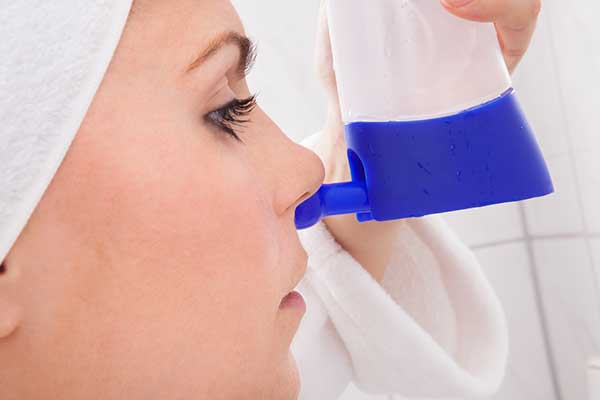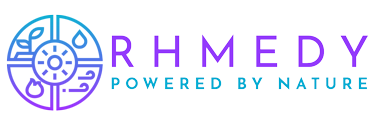Saline Nasal Irrigation for Upper Respiratory Conditions
Patients performing preventive saline nasal irrigation reported significantly fewer infections, shorter symptom duration, and fewer days with nasal symptoms compared with those who did not perform preventive nasal irrigation.
DAVID RABAGO, MD, and ALEKSANDRA ZGIERSKA, MD, PhD, University of Wisconsin School of Medicine and Public Health, Madison, Wisconsin
 Acute and chronic upper respiratory conditions are common and expensive disorders with an enormous impact on patient quality of life and society at large. Saline nasal irrigation (SNI), a therapy with roots in Ayurvedic medicine that bathes the nasal mucosa within a spray or liquid saline, has been used as adjunctive care for upper respiratory conditions. In liquid form, SNI has been found to be effective adjunctive care by the Cochrane Collaboration for symptoms associated with chronic rhinosinusitis. Less conclusive clinical trial evidence supports its use in spray and liquid forms as an adjunctive treatment for mild-to-moderate allergic rhinitis and acute upper respiratory infections. Consensus or expert opinion recommendations exist for SNI as a treatment for a variety of other conditions including rhinitis of pregnancy. SNI appears safe; side effects are minimal and transient. It can be recommended by clinicians to interested patients with a range of upper respiratory conditions in the context of patient education and printed instructional handouts.
Acute and chronic upper respiratory conditions are common and expensive disorders with an enormous impact on patient quality of life and society at large. Saline nasal irrigation (SNI), a therapy with roots in Ayurvedic medicine that bathes the nasal mucosa within a spray or liquid saline, has been used as adjunctive care for upper respiratory conditions. In liquid form, SNI has been found to be effective adjunctive care by the Cochrane Collaboration for symptoms associated with chronic rhinosinusitis. Less conclusive clinical trial evidence supports its use in spray and liquid forms as an adjunctive treatment for mild-to-moderate allergic rhinitis and acute upper respiratory infections. Consensus or expert opinion recommendations exist for SNI as a treatment for a variety of other conditions including rhinitis of pregnancy. SNI appears safe; side effects are minimal and transient. It can be recommended by clinicians to interested patients with a range of upper respiratory conditions in the context of patient education and printed instructional handouts.
Go to: BACKGROUND AND HISTORY OF SALINE NASAL IRRIGATION (SNI)
Upper respiratory conditions, including acute and chronic rhinosinusitis, viral upper respiratory infection (URI), and allergic rhinitis, are common disorders with significant patient and societal impact. SNI is an adjunctive therapy for upper respiratory conditions which bathes the nasal cavity with saline delivered as a spray or liquid. SNI likely originated in the Ayurvedic medical tradition.1 Several indications, solutions and administration devices for SNI were described in The Lancet in 1902.2
SNI has been identified as “an important component in the management of most sinonasal conditions [that is] effective and underutilized.”3 SNI can be performed using low positive pressure (spray or squirt bottle), or “gravity-based pressure (a vessel with a nasal spout) devices (Figure 1). Each is available OTC. Saline is instilled in one nostril and allowed to drain out the other. SNI use may be growing; it has received diverse media attention including the Oprah Winfrey Show (May 2007) and National Public Radio.4 Physician use of SNI is significant; in a survey of 330 Family Physicians, 87% reported recommending SNI to their patients for one or more conditions.5
Read Full Article at: AAFP.org




